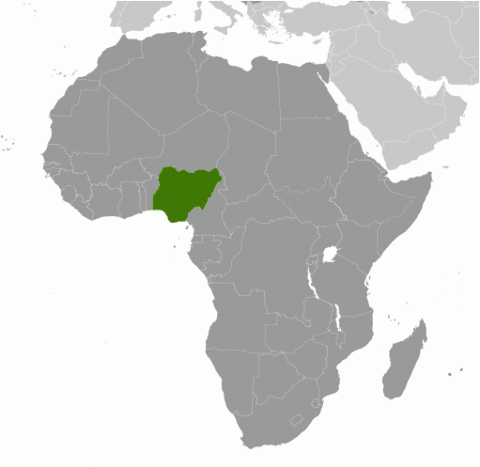Child Labor and Forced Labor Reports
Nigeria


Moderate Advancement
In 2024, Nigeria made moderate advancement in efforts to eliminate the worst forms of child labor. The government released the Nigeria Child Labor and Forced Labor Survey 2022 and held awareness-raising campaigns and advocacy programs in various states in collaboration with the International Labor Organization and other partners. The government also initiated a comprehensive mid-term evaluation of the National Policy and National Action Plan for the Elimination of Child Labor to measure progress, identify challenges, and recommend strategies to enhance the effectiveness of interventions targeting child labor. However, Nigeria’s minimum age for work protections do not meet international standards as they do not apply to children who are self-employed or working in the informal economy, and the State of Kano does not prohibit the use of children in illicit activities. The government also does not criminally prohibit the recruitment of children under age 18 by non-state armed groups and lacks the necessary number of labor inspectors to cover the labor force. In addition, social programs are insufficient to prevent and remove children from all relevant worst forms of child labor, including armed conflict and commercial sexual exploitation.
| Children | Age | Percent and Population |
|---|---|---|
| Working | 5 to 14 | 15.0% (6,798,456) |
| Hazardous Work by Children | 15 to 17 | Unavailable |
| Attending School | 5 to 14 | 78.0% |
| Combining Work and School | 7 to 14 | 10.4% |
| Sector/Industry | Activity |
|---|---|
| Agriculture | Production of manioc/cassava, cocoa, and rice; forestry; fishing; and herding livestock. |
| Industry | Mining and quarrying of granite and gravel; harvesting sand; artisanal gold and lithium mining; manufacturing; hide tanning; and construction, including carrying construction materials. |
| Services | Domestic work; collecting money on public buses, washing cars, and automotive repair; and street work, including vending, begging, and scavenging. |
| Categorical Worst Forms of Child Labor‡ | Commercial sexual exploitation, including use in the production of pornography, sometimes as a result of human trafficking; forced labor in begging; domestic work; street vending; mining and quarrying gravel and granite; agriculture, including in the production of cocoa; and forced recruitment and recruitment of children by non-state armed groups for use in armed conflict and in non-conflict support roles, sometimes as a result of human trafficking. |
‡ Child labor understood as the worst forms of child labor per se under Article 3(a)–(c) of ILO C. 182.
Children at Higher Risk
Children in and near Benin City, especially homeless children, including Almajiri children, are at higher risk of being trafficked as Benin City is a major human trafficking hub in Africa, with children exploited in forced labor and commercial sexual exploitation. Further, children from primarily rural areas within the country are at higher risk of being subjected to child labor, with girls recruited for domestic work and sex trafficking, while boys are recruited for street vending, domestic work, mining, agriculture, and begging. Children are involved in illegal mining, including in the northwest of the country. They use chisels and hammers, and descend into dark pits. Non-state armed groups such as Boko Haram and the Islamic State of Iraq and Syria West Africa forced children into armed conflict and contributed to the displacement of millions of Nigerians into internally displaced people camps, including children. Children in camps were vulnerable to labor exploitation. Research has found that girls abducted by Boko Haram were subjected to sexual and physical violence; forced to work as domestic servants, midwives, tailors, and caretakers for the elderly; and carried weapons to storage areas or were forced into combat as suicide bombers. Boys were recruited by force into combat, assembling arms, and acting as couriers, porters, and combatants. Reports indicate that rescued children were subjected to ill treatment and beatings while in military custody.
Barriers to Education Access
Research suggests that one-third of all Nigerian children are out of school. Northeastern and northwestern states have female primary net attendance rates of 47.7 percent and 47.3 percent, respectively. Rapid population growth in Nigeria is also driving the informal education sector, with several million boys in the north going to Quranic schools known as Almajiri. The government does not officially recognize these schools, and students attending Almajiri schools are officially considered to be out of school. The Almajiri system includes a component of child labor, with some teachers tasking older children with menial jobs and other children forced into begging. Some corrupt teachers exploit children, mostly boys from rural areas, in forced labor in begging and seasonal agricultural work, including in Cameroon and Chad. Children living in unregulated, makeshift “boarding schools” are exposed to disease due to neglect and unsanitary living conditions; some teachers and older students physically and sexually abuse younger students. Observers report that worsening poverty may have increased enrollment at these schools as well as vulnerability to forced labor. Reports also suggest that children lacking birth certificates or other formal documentation have been denied access to public schools. Although it is unclear how widespread this issue is, research suggests that it is most common in the northeastern region and rural areas. In addition, the widespread increase in kidnappings, killings, village raids, and cattle-rustling throughout the Northwest and North Central regions led by organized criminal groups has contributed to the intermittent closure of schools throughout the region, with these challenges being more acute in rural areas. Although free and compulsory education is federally mandated by the Education Act, little enforcement of compulsory education laws occurs at the state level. School fees are often charged in practice, and the cost of materials can be prohibitive for families. When families experience economic hardship, the enrollment of boys is typically prioritized over the enrollment of girls. Other barriers to education include a lack of trained teachers, sexual harassment, inadequate sanitation facilities, poor infrastructure, and fear of abduction or attack while at school.
| Standard | Age | Meets International Standards | Legislation |
|---|---|---|---|
| Minimum Age for Work | 12 | ✗ | Sections 59(1) and 91 of the Labor Act; Sections 28, 29, and 277 of the Child’s Right Act |
| Minimum Age for Hazardous Work | 18 | ✓ | Sections 59 (5) and (6) of the Labor Act; Sections 28, 29, and 277 of the Child’s Right Act; Sections 23 and 82 of the Trafficking in Persons (Prohibition) Enforcement and Administration Act 2015 |
| Identification of Hazardous Occupations or Activities Prohibited for Children | ✓ | Sections 59–61 and 91 of the Labor Act; Section 28 of the Child’s Right Act | |
| Prohibition of Slavery, Debt Bondage, and Forced Labor | ✓ | Sections 13, 21–25, and 82 of the Trafficking in Persons (Prohibition) Enforcement and Administration Act 2015; Sections 28, 30, and 277 of the Child’s Right Act; Article 34 of the Constitution | |
| Prohibition of Child Trafficking | ✓ | Sections 13, 16, 17, 21–25, and 82 of the Trafficking in Persons (Prohibition) Enforcement and Administration Act 2015; Sections 30, 33, and 277 of the Child’s Right Act | |
| Prohibition of Commercial Sexual Exploitation of Children | ✓ | Sections 13–17 and 82 of the Trafficking in Persons (Prohibition) Enforcement and Administration Act 2015; Section 23 of the Cybercrimes Act; Sections 30, 32, and 277 of the Child’s Right Act | |
| Prohibition of Using Children in Illicit Activities | ✗ | Sections 25, 26, 30, and 277 of the Child’s Right Act | |
| Minimum Age for Voluntary State Military Recruitment | ✗ | Section 28 of the Armed Forces Act; Sections 34 and 277 of the Child’s Right Act | |
| Prohibition of Compulsory Recruitment of Children by (State) Military | N/A | ||
| Prohibition of Military Recruitment by Non-state Armed Groups | ✗ | Section 19 of the Trafficking in Persons (Prohibition) Enforcement and Administration Act | |
| Compulsory Education Age | 15 | ✓ | Sections 2 and 15 of the Education Act |
| Free Public Education | ✓ | Sections 2 and 3 of the Education Act; Part 2 Section 15 of the Child’s Right Act |
In Nigeria, 35 of the 36 states have adopted and implemented the Child’s Right Act (CRA), leaving the state of Kano in northern Nigeria with a legal statute that does not meet international standards for the prohibition against the use of children in illicit activities. Furthermore, under the CRA, certain provisions of the Labor Act that are not in compliance with international standards may remain in force. This includes Section 59, which sets the minimum age for employment at age 12 in contradiction to the CRA, which only permits children under age 18 to engage in light work for family members. The minimum age for work is lower than the compulsory education age of 15, which may encourage children to leave school before the completion of compulsory education. In addition, the Labor Act permits children of any age to do light work in agriculture and domestic work if they are working with a family member, which does not meet international standards. Furthermore, the minimum age protections in the Labor Act do not apply to children who are self-employed or working in the informal economy. The law also falls below the international standard because it fails to establish a minimum age for voluntary state military recruitment with sufficient safeguards for voluntariness. Lastly, children are not excluded from the Terrorism Prevention Act’s penalty of life imprisonment for assisting in acts of terrorism and are implicitly included as people in the Trafficking in Persons (Prohibition) Enforcement and Administration Act.
| Organization/Agency | Role & Activities |
|---|
| Labor Inspectorate, Federal Ministry of Labor and Employment (FMLE): Deploys labor inspectors across 36 state labor offices and the federal capital territory to enforce federal child labor laws. |
| Nigeria Police: Enforce all laws prohibiting forced child labor and commercial sexual exploitation. Collaborate with the National Agency for the Prohibition of Trafficking in Persons (NAPTIP) to address human trafficking issues. |
| Overview of Enforcement Efforts | 2024 |
|---|---|
| Has a Labor Inspectorate | Yes |
| Able to Assess Civil Penalties | Yes |
| Routinely Conducted Worksite Inspections | Yes |
| Unannounced Inspections Permitted | Yes |
| Has a Complaint Mechanism | Yes |
| Imposed Penalties for Child Labor Violations | Unknown |
| Conducted Criminal Investigations for Worst Forms of Child Labor Crimes | Yes |
| Imposed Penalties for Worst Forms of Child Labor Crimes | Yes |
In 2024, 2,010 labor inspectors conducted 7,610 worksite inspections, finding 11 child labor violations with 9 resulting in civil penalties and 4 civil penalties collected. The government also reported 58 cases of employment of a child domestic worker and in which child victims of trafficking were rescued and transferred to rehabilitation facilities. Additionally, 17 prosecutions were initiated and 5 resolved during the reporting period, and 7 convictions were achieved and fines and jail-time issued for harboring of persons, procurement of sexual exploitation, hiring out of domestic work and forced labor, and procurement of minors for sexual exploitation. As of October 2024, the government reported 69 convictions for trafficking in persons, 27 convictions related to violence against persons, and 11,530 children rescued.
| Coordinating Body | Role & Activities |
|---|
| National Steering Committee for the Elimination of Child Labor (NSCCL): Coordinates efforts to address child labor and is led by FMLE; comprises representatives from seven governmental agencies, faith-based organizations, NGOs, and the ILO. Members are charged with leveraging resources for project implementation from their institutions and identifying synergies with other existing programs. The committee initiated a mid-term evaluation of the National Action Plan on the Elimination of Child/Forced Labor in Nigeria (2021-2025) and facilitated activities for state steering committees throughout all 36 states during the reporting period. |
| Policy | Description & Activities |
|---|
| National Action Plan for the Elimination of Child Labor and Its Worst Forms (2021–2025): Outlines the steps toward achieving the elimination of the worst forms of child labor by 2025 and child labor in its entirety in 2030. In June 2024, FMLE and NSCCL held a national conference on the elimination of child labor that included child participants and other stakeholders representing the private sector and NGOs to discuss challenges and solutions to address child labor. In July 2024, NSCCL initiated a comprehensive mid-term evaluation of the National Policy and National Action Plan for the Elimination of Child Labor to measure progress, identify challenges, and recommend strategies to enhance the effectiveness of interventions targeting child labor. The government also commemorated the 2024 World Day Against Child Labor and held awareness-raising and advocacy events at the national and state levels, including events in Ondo State, Osun State, and Niger State focused on child labor in the mining sector. The government, including local leaders such as the Deji of Akure, also supported walks throughout communities raising awareness about child labor and sensitization sessions on the child labor survey published by the National Bureau of Statistics. |
| National Action Plan on Human Trafficking in Nigeria (2022–2026): Provides a framework for anti-human trafficking programming, with an emphasis on enforcement, prosecution, and provision of services to survivors. Officers and new employees received training on the provisions of the Trafficking in Persons (Prohibition) Enforcement and Administration Act of 2015, including Section 23, which prohibits the employment of children in domestic work and inflicting grievous harm. Anti-human trafficking operations have a 24-hour hotline that can be used to report child labor violations and offer referrals to shelters for trafficking victims. The hotline received 108 calls to report trafficking in persons, which resulted in 66 referrals. |
| National Action Plan for Preventing and Countering Violent Extremism: Designed to end the recruitment and use of children by the Civilian Joint Task Force (CJTF). Aims to promote the protection of children’s rights, ensures that suspects under age 18 are treated in accordance with international law, and provides for disarmament, demobilization, and reintegration of children previously associated with CJTF. Since the signing of the National Action Plan for Preventing and Countering Violent Extremism, the UN has reported nearly no use of children by CJTF. |
† The government had other policies that may have included the goal of eliminating or preventing child labor.
| Program | Description & Activities |
|---|
| NAPTIP Shelters for Human Trafficking Victims:‡ Shelters were active during the reporting period, providing legal, medical, and psychological services, in addition to vocational training and business management skills, and referring survivors to NGOs for additional care. However, research found concerns regarding the conditions in shelters housing human trafficking survivors, including poor housing facilities, a lack of food, and insufficient stipends, along with reports of survivors being housed in the same compound as trafficking suspects. |
| Accelerating Action for the Elimination of Child Labor in Supply Chains in Africa, Phase II (ACCEL Africa): ILO-sponsored regional project which aims to eliminate child labor in supply chains, with particular focus on those involved in the production of cocoa, coffee, cotton, gold, and tea. In 2024, ILO-ACCEL launched its second phase expanding activities in Ondo State. |
| World Bank-Funded Programs: Projects aimed to improve access to education. Include the Additional Financing for Adolescent Girls Initiative for Learning and Empowerment, a $700 million project aimed at improving secondary education opportunities for girls that was approved in 2023. As of March 29, 2024, the project has rehabilitated classrooms in existing schools, distributed school improvement grants, and provided scholarships, a social safety net, and life skills and digital literacy programs. The project has also engaged with the community at the local level regarding the importance of girls’ education. |
‡ Program is funded by the Government of Nigeria.
| Area | Suggested Action |
|---|---|
| Legal Framework | Raise the minimum age for work from 12 to 15 to align with the compulsory education age and ensure that the minimum age for work applies to children working in the informal sector and who are self-employed. Ensure that provisions related to light work conform to international standards by putting restrictions on domestic and agricultural work. |
| Harmonize the Child's Right Act and the Labor Act to ensure that their legal provisions are not contradictory, including provisions on minimum age for work and light work. | |
| Criminally prohibit using, procuring, and offering a child for the production and trafficking of drugs in Kano. | |
| Ensure that the law establishes 16 or 17 as the minimum age for voluntary recruitment by the state military with safeguards for voluntariness. | |
| Criminally prohibit the recruitment of children under age 18 by non-state armed groups. | |
| Amend the Terrorism Prevention Act to no longer allow the penalty of life imprisonment of children for their association with armed groups. | |
| Enforcement | Increase the number of labor inspectors to 5,059 to ensure adequate coverage of the labor force of approximately 75,887,000 workers. Ensure that labor inspectors receive sufficient resources, including funding, resources for inspections, office facilities, transportation, fuel, and other necessities, to enforce child labor laws. |
| Ensure criminal enforcement agencies receive sufficient resources, including funding, to enforce child labor laws, including worst forms of child labor. | |
| Establish a mechanism to enforce existing protections for children working in the informal sector. | |
| Publish information on child labor law enforcement, including labor inspectorate funding, whether training for labor inspectors is provided, the number of child labor violations found, whether penalties were imposed for child labor violations, the number of child labor penalties imposed that were collected, and whether routine, targeted, and unannounced inspections were conducted. | |
| Publish disaggregated information on criminal law enforcement, including training for criminal investigators, number of investigations, prosecutions initiated, convictions, and penalties imposed for violations related to the worst forms of child labor. | |
| Establish a digital tracking system for civil worst forms of child labor inspections. | |
| Government Policies | Ensure that activities are undertaken to implement government policies, including the National Action Plan on Human Trafficking in Nigeria and National Action Plan for Preventing and Countering Violent Extremism, and that data on these activities are published on an annual basis. |
| Social Programs | Increase access to education by ensuring all states adopt programs to reduce financial barriers, assist the transfer of children in Almajiri schools into government-recognized schools; reduce barriers parents face in procuring proper birth documentation for children to enroll in school; provide sufficient infrastructure for schools, including increasing the number of sanitation facilities; address sexual harassment by ensuring there are proper protection protocols in place to keep students safe at school; and establish programs to ensure girls are afforded the same educational opportunities as boys. |
| Ensure that the National Agency for the Prohibition of Trafficking in Persons and Other Related Matters and related agencies provide appropriate facilities and resources, including livable stipends and adequate housing, to survivors, and that survivors are not held against their will in shelters. | |
| Enhance through increased funding, training, and sensitization programs that prevent and remove children from all relevant worst forms of child labor, including armed conflict and commercial sexual exploitation. |









